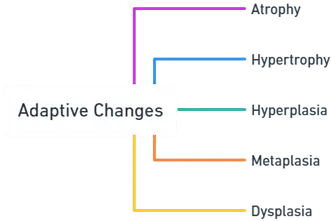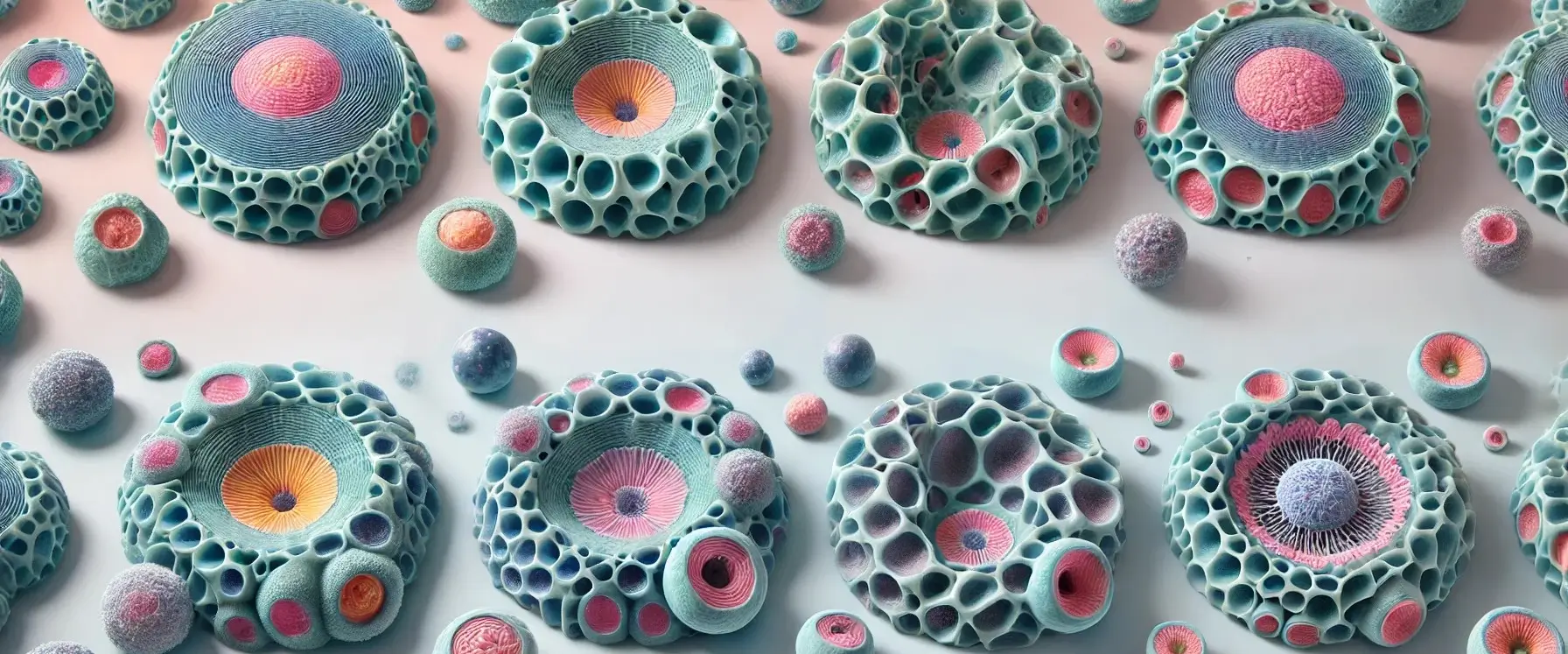- Adaptive changes are modifications that cells undergo in response to chronic stress or injurious stimuli, allowing them to survive and maintain function.
- These changes can be either physiological (normal) or pathological (abnormal).
- The main types of adaptive changes include atrophy, hypertrophy, hyperplasia, metaplasia, and dysplasia.

1. Atrophy
-
Description:
- Reduction in cell size and function due to decreased demand or insufficient nutrients. Cells shrink, losing organelles and reducing metabolic activity.
-
Causes:
- Disuse (e.g., muscle atrophy from immobility)
- Denervation (e.g., muscle atrophy from nerve loss)
- Ischemia (e.g., reduced blood supply)
- Malnutrition
- Loss of endocrine stimulation (e.g., menopause-related endometrial atrophy)
-
Microscopic Appearance:
- Smaller cells with fewer organelles
- Presence of autophagic vacuoles and lipofuscin granules
2. Hypertrophy
-
Description:
- Increase in cell size due to greater functional demand or hormonal stimulation. Cells grow larger and gain more structural proteins and organelles.
-
Causes:
- Increased workload (e.g., skeletal muscle hypertrophy from exercise)
- Hormonal stimulation (e.g., uterine hypertrophy during pregnancy)
-
Microscopic Appearance:
- Enlarged cells with more cytoplasm and larger nuclei
- No increase in cell number
3. Hyperplasia
-
Description:
- Increase in the number of cells in a tissue or organ due to higher demand or hormonal influence.
-
Causes:
-
Microscopic Appearance:
- More cells, but with normal morphology
- Intact tissue architecture
4. Metaplasia
-
Description:
- Reversible replacement of one differentiated cell type with another better suited to handle stress, often due to chronic irritation.
-
Causes:
- Chronic irritation or inflammation (e.g., squamous metaplasia in smokers’ airways)
-
Microscopic Appearance:
- New, normal-appearing cell type in an abnormal location (e.g., squamous cells replacing columnar epithelium)
5. Dysplasia
-
Description:
- Abnormal growth and differentiation of cells, often considered pre-cancerous. Cells display loss of uniformity and disordered growth.
-
Causes:
- Chronic irritation or inflammation (e.g., cervical dysplasia from HPV)
- Genetic mutations
Microscopic Appearance:
- Pleomorphism (variability in size and shape)
- Increased nuclear-to-cytoplasmic ratio
- Hyperchromatic, irregular nuclei
- Loss of normal tissue architecture
Click Here to Watch the Best Pharma Videos

